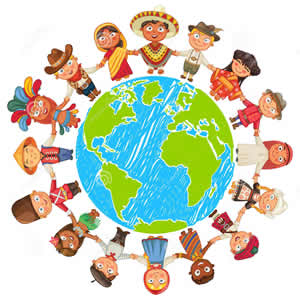Stamp: Malaitan pipers (Solomon Islands 1983)
Malaitan pipers (Solomon Islands 1983)
25 August (Solomon Islands ) within release Christmas 1983 goes into circulation Stamp Malaitan pipers face value 40 Solomon Islands cent
| Stamp Malaitan pipers in catalogues | |
|---|---|
| Michel: | Mi: SB 506 |
| Stamp Number: | Sn: SB 508 |
| Stanley Gibbons: | Sg: SB 504 |
Stamp is horizontal format.
Also in the issue Christmas 1983:
- Stamp - Cross, flowers face value 50;
- Stamp - Wrestling face value 15;
- Stamp - Gilbertese (i-Kiribati) dancers face value 35;
- Stamp - Girl Dancers face value 18;
- Stamp - Malaitan pipers face value 40;
- Stamp - Weto dancers face value 12;
- Stamp - Temotu Devil dancers face value 20;
- Stamp - Bamboo Band face value 25;
- Stamp - Cross Surrounded by Flowers face value 50;
- Stamp - Custom Wrestling face value 15;
- Stamp - Devil Dancers face value 20;
- Stamp - Gilbertese Dancers face value 35;
- Stamp - Girl Dancers face value 18;
- Stamp - Girl Dancers face value 45;
- Stamp - Pan Pipers face value 40;
- Stamp - Weto Dancers face value 12;
|
Data entry completed
80%
|
|
|---|---|
| Stamp Malaitan pipers in digits | |
| Country: | Solomon Islands |
| Date: | 1983-08-25 |
| Size: | 42 x 28 |
| Emission: | Commemorative |
| Format: | Stamp |
| Face Value: | 40 Solomon Islands cent |
Stamp Malaitan pipers it reflects the thematic directions:
Christmas or Christmas Day (Old English: Crīstesmæsse, meaning "Christ's Mass") is an annual festival commemorating the birth of Jesus Christ, observed most commonly on December 25 as a religious and cultural celebration among billions of people around the world. A feast central to the Christian liturgical year, it is prepared for by the season of Advent or the Nativity Fast and initiates the season of Christmastide, which historically in the West lasts twelve days and culminates on Twelfth Night; in some traditions, Christmastide includes an Octave. The traditional Christmas narrative, the Nativity of Jesus, delineated in the New Testament says that Jesus was born in Bethlehem, in accordance with messianic prophecies; when Joseph and Mary arrived in the city, the inn had no room and so they were offered a stable where the Christ Child was soon born, with angels proclaiming this news to shepherds who then disseminated the message furthermore. Christmas Day is a public holiday in many of the world's nations, is celebrated religiously by the vast majority of Christians, as well as culturally by a number of non-Christian people, and is an integral part of the holiday season, while some Christian groups reject the celebration. In several countries, celebrating Christmas Eve on December 24 has the main focus rather than December 25, with gift-giving and sharing a traditional meal with the family.
A culture is a way of life of a group of people--the behaviors, beliefs, values, and symbols that they accept, generally without thinking about them, and that are passed along by communication and imitation from one generation to the next. Culture is symbolic communication. --the behaviors, beliefs, values, and symbols that they accept, generally without thinking about them, and that are passed along by communication and imitation from one generation to the next. Culture is symbolic communication.
Dance is an art form, often classified as a sport, consisting of sequences of body movements with aesthetic and often symbolic value, either improvised or purposefully selected. Dance can be categorized and described by its choreography, by its repertoire of movements or by its historical period or place of origin. Dance is typically performed with musical accompaniment, and sometimes with the dancer simultaneously using a musical instrument themselves.
Music is an art form and cultural activity whose medium is sound organized in time. The common elements of music are pitch (which governs melody and harmony), rhythm (and its associated concepts tempo, meter, and articulation), dynamics (loudness and softness), and the sonic qualities of timbre and texture (which are sometimes termed the "color" of a musical sound). Different styles or types of music may emphasize, de-emphasize or omit some of these elements. Music is performed with a vast range of instruments and vocal techniques ranging from singing to rapping; there are solely instrumental pieces, solely vocal pieces (such as songs without instrumental accompaniment) and pieces that combine singing and instruments. The word derives from Greek μουσική (mousike; "art of the Muses"). In its most general form, the activities describing music as an art form or cultural activity include the creation of works of music (songs, tunes, symphonies, and so on), the criticism of music, the study of the history of music, and the aesthetic examination of music. Ancient Greek and Indian philosophers defined music as tones ordered horizontally as melodies and vertically as harmonies. Common sayings such as "the harmony of the spheres" and "it is music to my ears" point to the notion that music is often ordered and pleasant to listen to.
A musical instrument is a device created or adapted to make musical sounds. In principle, any object that produces sound can be considered a musical instrument—it is through purpose that the object becomes a musical instrument. A person who plays a musical instrument is known as an instrumentalist. The history of musical instruments dates to the beginnings of human culture. Early musical instruments may have been used for rituals, such as a horn to signal success on the hunt, or a drum in a religious ceremony. Cultures eventually developed composition and performance of melodies for entertainment. Musical instruments evolved in step with changing applications and technologies.
A musician is an artist who composes, conducts, or performs music. According to the United States Employment Service, "musician" is a general term used to designate a person who follows music as a profession. Musicians include songwriters, who write both music and lyrics for songs; conductors, who direct a musical performance; and performers, who perform for an audience. A music performer is generally either a singer, who provides vocals, or an instrumentalist, who plays a musical instrument. Musicians may perform on their own or as part of a group, band or orchestra. Musicians can specialize in a musical genre, though many play a variety of different styles, depending on the cultures and backgrounds involved. A musician who records and releases music can be known as a recording artist.





